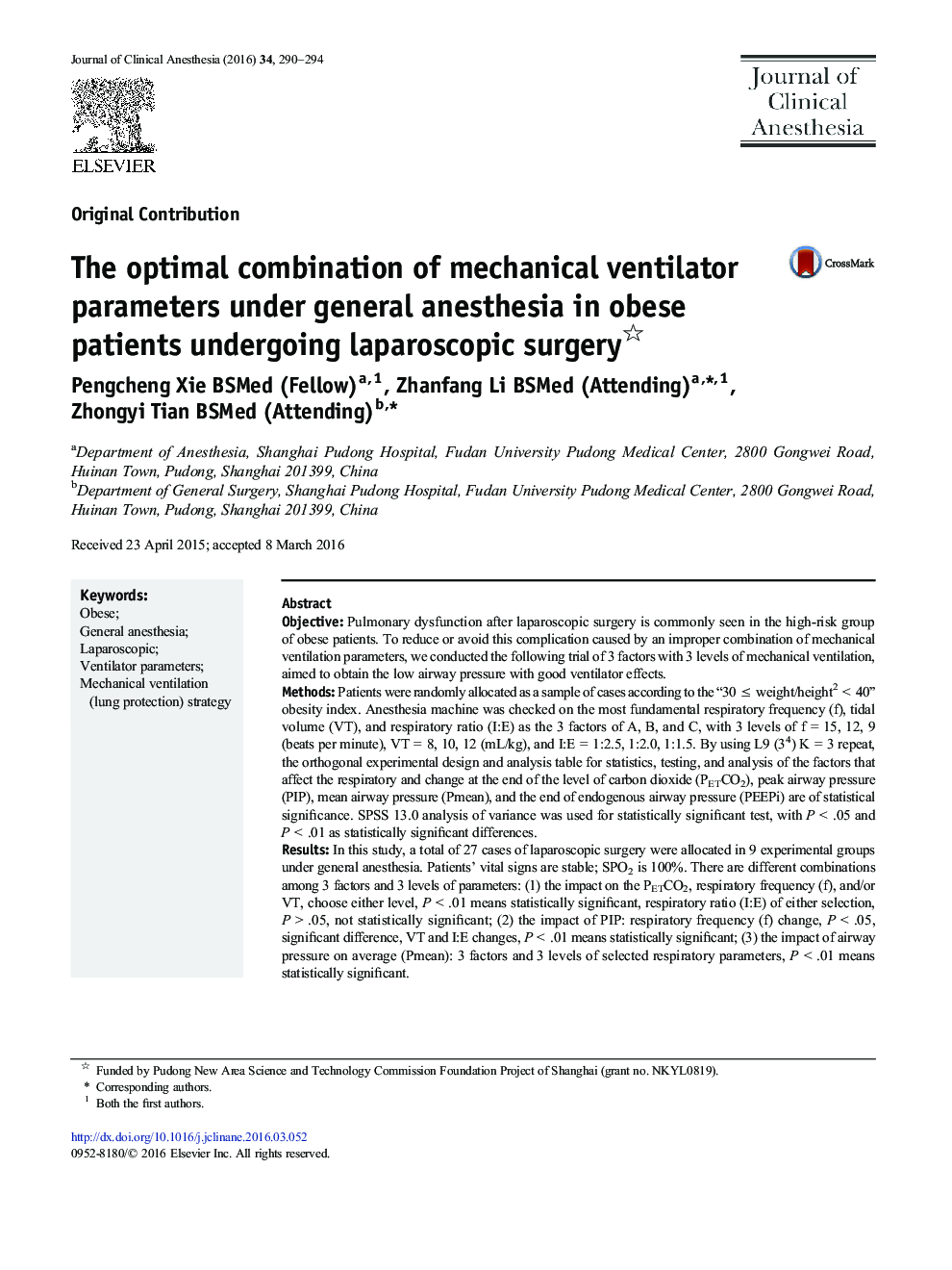| Article ID | Journal | Published Year | Pages | File Type |
|---|---|---|---|---|
| 5884529 | Journal of Clinical Anesthesia | 2016 | 5 Pages |
â¢Lung protection of the obese patients.â¢Three factors with three levels of mechanical ventilation.â¢Maintain better ventilation while reducing airway pressure.
ObjectivePulmonary dysfunction after laparoscopic surgery is commonly seen in the high-risk group of obese patients. To reduce or avoid this complication caused by an improper combination of mechanical ventilation parameters, we conducted the following trial of 3 factors with 3 levels of mechanical ventilation, aimed to obtain the low airway pressure with good ventilator effects.MethodsPatients were randomly allocated as a sample of cases according to the “30 â¤Â weight/height2 < 40” obesity index. Anesthesia machine was checked on the most fundamental respiratory frequency (f), tidal volume (VT), and respiratory ratio (I:E) as the 3 factors of A, B, and C, with 3 levels of f = 15, 12, 9 (beats per minute), VT = 8, 10, 12 (mL/kg), and I:E = 1:2.5, 1:2.0, 1:1.5. By using L9 (34) K = 3 repeat, the orthogonal experimental design and analysis table for statistics, testing, and analysis of the factors that affect the respiratory and change at the end of the level of carbon dioxide (PETCO2), peak airway pressure (PIP), mean airway pressure (Pmean), and the end of endogenous airway pressure (PEEPi) are of statistical significance. SPSS 13.0 analysis of variance was used for statistically significant test, with P < .05 and P < .01 as statistically significant differences.ResultsIn this study, a total of 27 cases of laparoscopic surgery were allocated in 9 experimental groups under general anesthesia. Patients' vital signs are stable; SPO2 is 100%. There are different combinations among 3 factors and 3 levels of parameters: (1) the impact on the PETCO2, respiratory frequency (f), and/or VT, choose either level, P < .01 means statistically significant, respiratory ratio (I:E) of either selection, P > .05, not statistically significant; (2) the impact of PIP: respiratory frequency (f) change, P < .05, significant difference, VT and I:E changes, P < .01 means statistically significant; (3) the impact of airway pressure on average (Pmean): 3 factors and 3 levels of selected respiratory parameters, P < .01 means statistically significant.ConclusionThe best combination of respiratory parameters is A3B1C2, that is, f = 9 beats per minute, VT = 8 mL/kg, and I:E = 1:2.0. That is, neither small tidal volume and faster frequency nor slow frequency large tidal volume is a good choice. To let obese patients under general anesthesia can obtain a lung protective effect of low airway pressure with good ventilation; it is noteworthy that (1) I:E of airway pressure (PIP, Pmean) is the important impact factor for the protection of the lung and (2) I:E of airway pressure (PIP, Pmean) is the factor with opposite properties.
